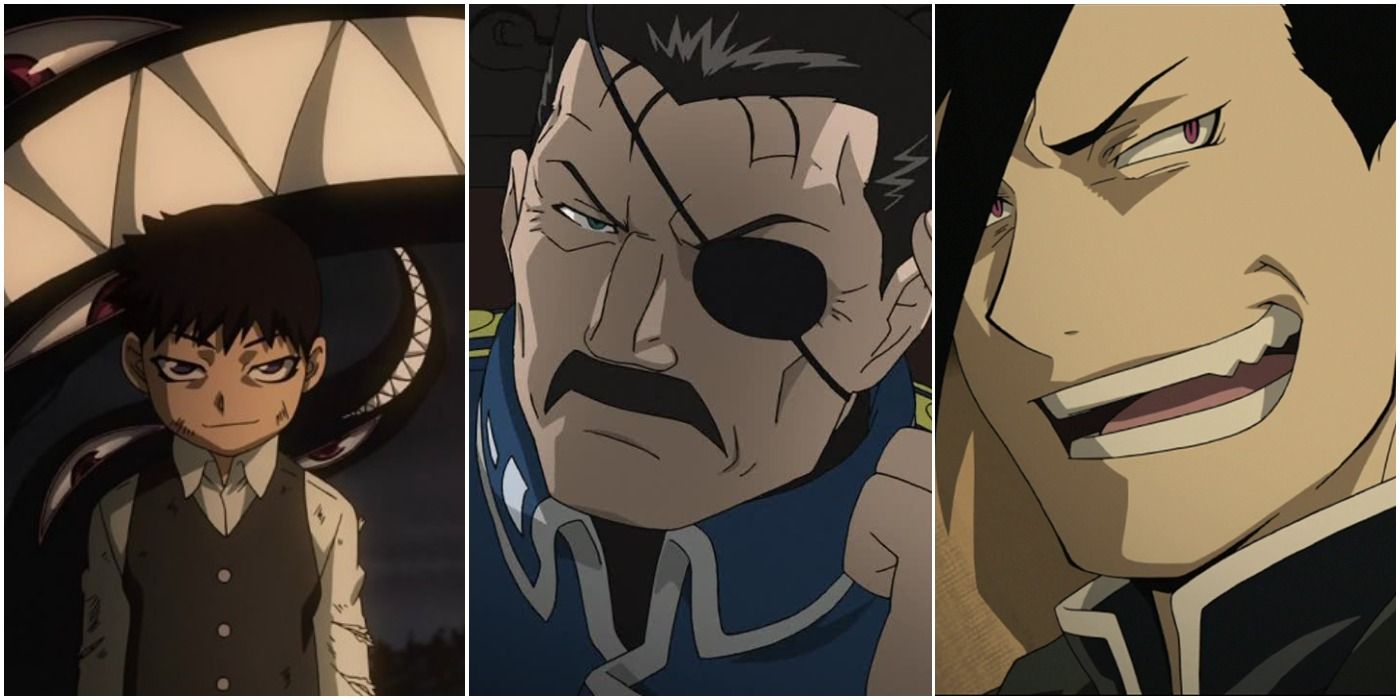

The hexagram that encompasses the center is changed to a more stylized hexagram, presumably to avoid any kind of religious references. As seen from the images, the manga version of the Ouroboros is slightly different from the anime versions.The actual appearance of an Ouroboros is a snake or a dragon (with hands) eating itself in an assymmetrical circle.This could be roughly translated as "he who eats his tail", matching the imagery of a dragon eating its own tail. The word Ouroboros is derived from the Greek words "ουρά" + "βορά", tail + prey.Pride's Ouroboros is located on his left eye (same as Wrath in the manga and 2009 anime).Sloth's Ouroboros is located above her left breast, presumably at the heart.Wrath's Ouroboros is located on the sole of his right foot.Pride is the only Homunculus without an Ouroboros, instead having a circular mark on his true form's forehead.Sloth's Ouroboros is located on the back of his right shoulder.Wrath's Ouroboros is located on his left eye (same as Pride in the 2003 anime).Greed's Ouroboros is located on the back of his left hand.Envy's Ouroboros is located on their left thigh.Gluttony's Ouroboros is located on his tongue.Lust's Ouroboros is located on her upper sternum, just above her breasts.Locations of Ouroboros tattoos In all versions of the story
FULLMETAL HOMUNCULUS SERIES
One could perceive the Ouroboros as a sort of basis for the Transmutation Circles used in the series and it is possible that the Ouroboros may also symbolize a solar eclipse in some belief structures.īefore learning of their identities as Homunculi, Edward referred to the individuals behind the odd circumstances in Amestris as "Members of the Ouroboros". Encircled within is a hexagram, which is a symbol often associated with alchemy as well as human creation. This particular Ouroboros displays a winged serpent with its tail in its mouth, creating a circle with its body. All of the seven main Homunculi in the Fullmetal Alchemist series are presumed to have the mark located somewhere upon their person as if tattooed there, except for Pride in the manga and 2009 anime. The head of the dragon represents the beginning of life, while the tail as it is being bitten represents the end of life, the circular motion shows the perpetual cycle of life and death as the dragon consumes its tail. The circular affinity suggests the eternal cycle of life and death that happens to each.

It represents the eternal cycle of life and death or wholeness and infinity. But he was no longer a menace, at least.The Ouroboros is a mystical symbol representing a dragon devouring its own tail. Instead, his forehead has the same circular mark that his true form had, making it clear that Pride was not truly dead. He appears to be about three-years-old and doesn't seem to retain his previous memory or personality. In a somewhat ambiguous epilogue scene, Pride is seen reborn as Selim Bradley with the same human body but younger than he was in the main story. Ed remarked on how the arrogant Pride had become such a tiny and helpless thing, but he didn't destroy it. Pride wasn't completely killed his body was lost and his Philosopher's Stone was weakened, reducing him to a tiny newborn that could fit on Edward's palm. Pride's shadowy body was destroyed when Edward converted himself into a human Philosopher's Stone and confronted Pride's soul - destroying it with a punch. It should also be noted that some homunculi have a tiny true form that may appear if their main body is destroyed, such as Envy and Pride. A homunculus can regenerate its body if it sustains fatal injuries, and if its Philosopher's Stone runs out of power (souls), Father can re-absorb it and restock it, as he did for Gluttony.

Pride was certainly defeated but he wasn't destroyed for good like the other six homunculi were. This is the one, loose exception to the rule.


 0 kommentar(er)
0 kommentar(er)
